Electric vehicle ownership changes you. You don't think in gallons anymore, but in charge time and range abilities. The words “charge to 80 percent to save your battery” become etched into your psyche. It’s enough for most drives. It’s courteous. And now, it’s also cheap, because if you dare hang around beyond that, Tesla will happily charge you 50 cents a minute for the privilege.
One EV owner broke the news on Reddit:
"PSA: Tesla has replaced Idle Fees with Congestion Fees at all North America superchargers. This affects anyone who uses their network, Tesla or not... Instead of applying 5 minutes after the end of your charging session it applies 5 minutes once your car has reached 80% displayed state of charge (or when your charging session ends if your charge limit is below 80%)... congestion fees apply at a flat rate of 50 cents/minute at an undisclosed supercharger capacity stated by Tesla as 'when busy'... In my opinion, this is a truly awful change… I personally road trip quite often and have experienced circumstances where I needed to charge past 80%."
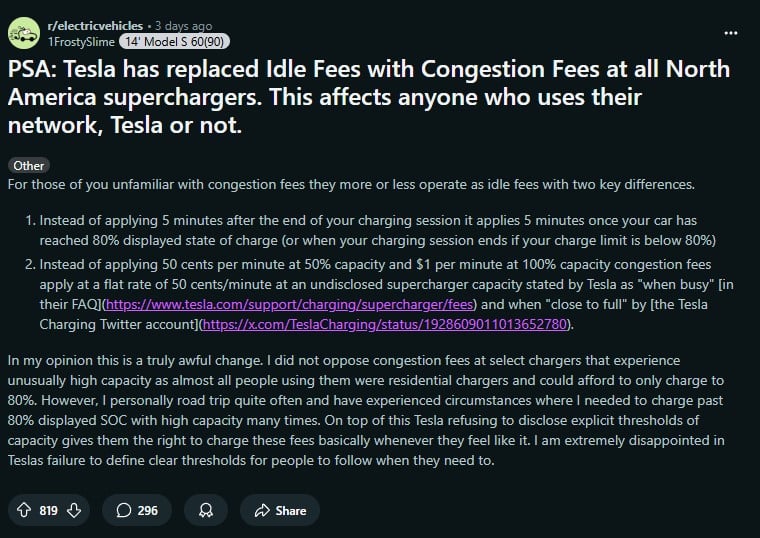
Out in the wilds in northern Michigan or central Nevada, charging to 100% isn’t a luxury; it’s survival.
That said, chances are, you won’t get dinged. Most of the time, those Superchargers aren’t exactly jam-packed.
A photo snapped in Mackinaw City, MI, shows a Tesla pulling 44.5 kWh at $0.35/kWh for just over $15. But as The Cybertruck Guy noted on Twitter:
“Congestion fees in Mackinaw City are $0.50/minute above 80%
What congestion? 😂😂
This charger is the last charger for 170+ miles into the literal wilderness. Charging a congestion fee at an empty V3 station for a non-negotiable 100% charge is kinda insane tbh”
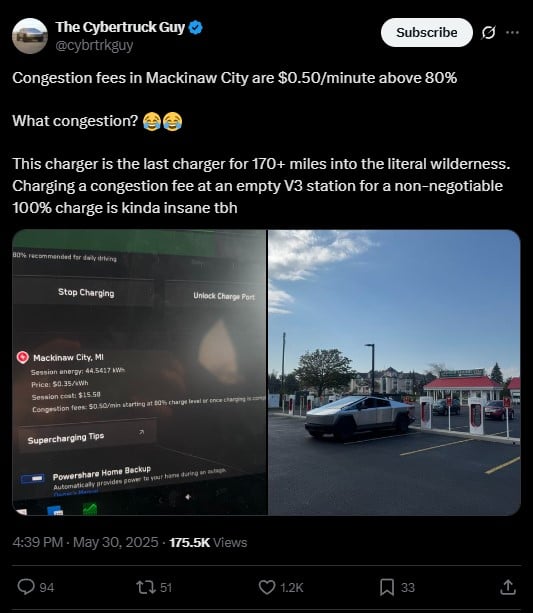
But that’s not all, he looked at the media screen again and noted once more:
“So I would pay nearly $20 extra just to make it (safely) to the next charger. Hmm”
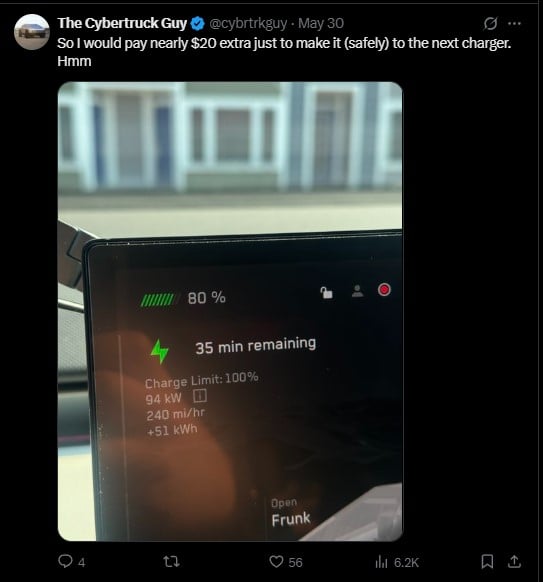
Tesla, in its usual polished, press-release cadence, took to X (formerly Twitter) to clarify:
"Congestion Fees only apply when the site is full, or close to full, and you get notified. This helps free up stalls in the rare cases of queuing. We'll make it clearer on the touchscreen."
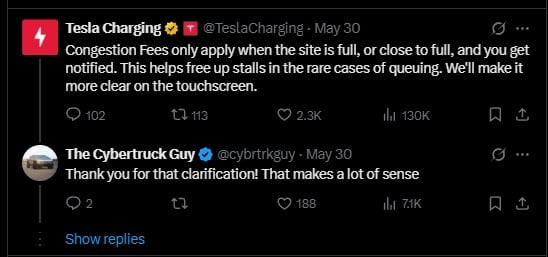
It’s a soft answer to a sharp question.
He later noted that:
"Okay, so apparently you get notified when congestion fees are in effect. They are not in effect 24/7Weird how I completely misunderstood that detail when I’ve supercharged almost 4 MWh in the last month"
The UI wasn't clear, and it confused him and other Tesla owners, but it led to a question.
What exactly is “close to full?” Is that 60%? 90%? Users on forums like TeslaMotorsClub speculate based on anecdotal warnings appearing at around 60–70% occupancy, but there's no concrete number from Tesla. That leaves the average driver guessing and sweating.
Comprehensive 2025 Tesla Cybertruck Charging Guide: Supercharger Speeds, Peak Power & Home Charging Times
- DC fast-charge (11- 80 %) typically takes 36–45 minutes, averaging around 118 kW. In real-world tests, one session recorded 11–80 % in 45 minutes (≈88.6 kWh added), while a faster V3 Supercharger hit 36 minutes and 18 seconds in independent testing
- Full charge (5–100 %) on a 250 kW Supercharger takes about an hour to two hours, largely due to the tapering of power after 80 %. One test saw 5–100 % in 1 hour and 2 minutes at 405 kW peak, though capped to 250 kW in practice
- Peak charging potential tops out around 350–405 kW at high-voltage (800 V) stations, but Tesla currently limits Cybertruck to 250 kW at Superchargers. The truck's battery architecture could support much more, yet the station dictates the actual power delivered.
- Home charging on a Level 2 240 V outlet (~11.5 kW) takes roughly 10–11 hours for a full charge from empty
This isn’t some evil empire move. There’s logic under the hood. Charging networks lose money when a car sits there sipping power at 30kW while another could be guzzling at 180kW.
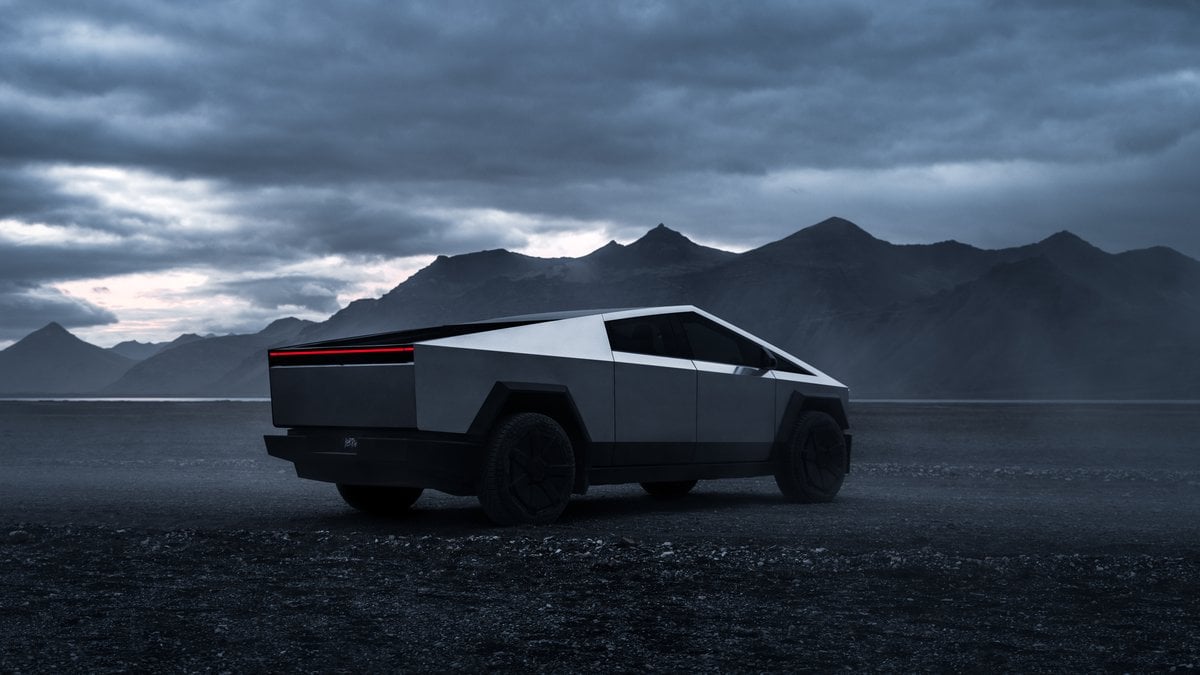
As one Redditor, Volvowner44, put it:
“It costs them to have a vehicle charging at 30kW approaching 100% when a fresh EV could plug in and get a 180kW rate.”
That’s just math. And from the standpoint of grid efficiency and profit margins, penalizing slow charging behavior makes sense. But here’s the kicker: efficiency doesn’t always align with necessity.
Road-Trip Survival: Why Cybertruck Owners Must Charge to 100% in Remote Areas
We’ve all been there, out past the margins, coasting toward the next charger with a white-knuckle grip and 2% on the dash. As Tezlaract shared:
“My last Tesla trip involved a 90% charge followed by a 58 mph run to the next supercharger station and arriving at 2%. I would have paid a congestion charge to be miserable.”
When the alternative is being stranded in the middle of the Oregon forest or the Nevada desert, you’ll take the fee and curse the system quietly. Some places, like the corridor from Grants Pass to Crescent City, require more than 80%. No chargers in between. No negotiation.
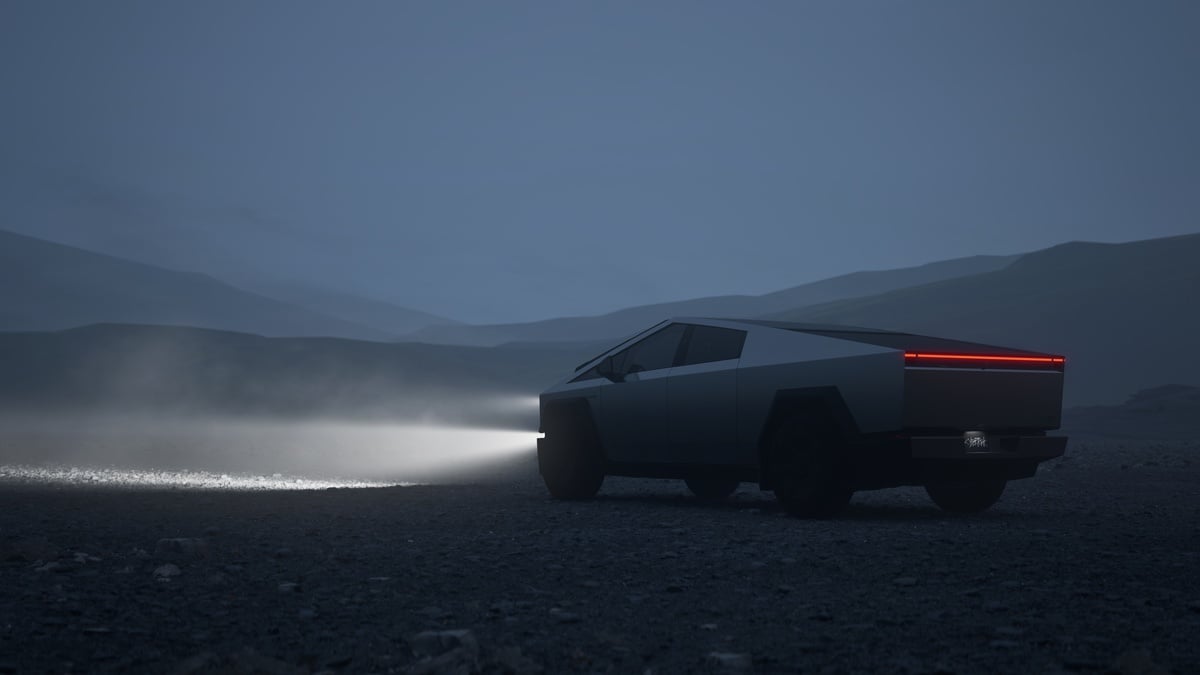
And here’s where Tesla’s vagueness becomes a problem. According to notateslaapp.com, “there's a grace period of five minutes before congestion fees will apply,” after which the meter starts running. That’s understandable. But the ambiguity around “when busy” is a growing concern. Tesla used to have hard thresholds for idle fees, 50% station usage. A Redditor commented, “SC doesn’t have displays to call those people out.” Which is to say, no one knows who's overcharging or when you’re it.
EV Charging Fee Models: Idle Surcharges, Time-of-Use Rates & Congestion Pricing
- Electrify America stations in busy locations will automatically stop charging at ~85% SOC, then give you a ten‑minute window to move your car before idle fees apply
- EVgo uses time‑of‑use pricing, charging different rates for Super‑Off‑Peak, Off‑Peak, and On‑Peak hours to spread charging demand and reduce congestion during busy times
- Many public charging operators implement dynamic pricing strategies, raising fees per minute or per kWh during peak congestion periods to encourage turnover and help drivers shift to less busy stations
- “Blocking” or “congestion” fees, similar to parking overstay fines, are increasingly imposed when a vehicle remains plugged in past its charging completion, a model adopted industry‑wide to deter loitering at high‑demand chargers
The whole EV ecosystem is racing toward this future. Electrify America does it. So does ChargePoint. It’s all part of the great optimization game. Fine for cities. But for rural travelers, the ones trailblazing America’s electric frontier, this hits harder. They're not charging because they want to. They're charging because the next plug is hours away.
So here we are, in the age of financial enforcement of etiquette. What started as an unspoken agreement, charge to 80%, move on, has become policy. Congestion fees may be justified in urban areas, but they’re a blunt instrument if applied to every Supercharger indiscriminately.
Until America’s charging network rivals the ubiquity of gas stations, these fees will feel less like a gentle nudge and more like a slap on the wrist. The EV community will adapt. It always does. But Tesla owes its drivers clarity, not just charges.
Would you fight the congestion fee if it happened to you? Let us know in the comments below.
Image Sources: Tesla Newsroom, Twitter/X @cybrtrkguy
Noah Washington is an automotive journalist based in Atlanta, Georgia. He enjoys covering the latest news in the automotive industry and conducting reviews on the latest cars. He has been in the automotive industry since 15 years old and has been featured in prominent automotive news sites. You can reach him on X and LinkedIn for tips and to follow his automotive coverage.



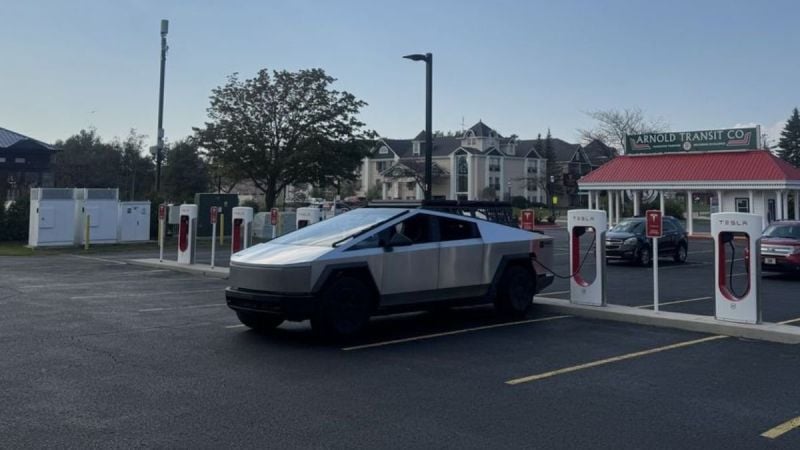




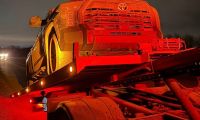
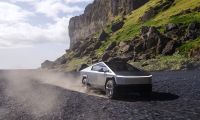
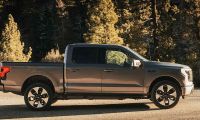
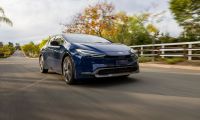
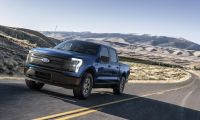
Comments
My 2004 Mazda B2300 suffers…
Permalink
My 2004 Mazda B2300 suffers from none of these problems.
That's good to hear man!
Permalink
In reply to My 2004 Mazda B2300 suffers… by Buzz Wired (not verified)
That's good to hear man!
This was a horrible decision…
Permalink
This was a horrible decision by Tesla. There are a lot of Teslas running around with Lithium Iron Phosphate battery chemistry, and on these Tesla's onboard software tells owners to set the maximum charge to 100% and charge it up to that level once a week. Setting universal company policy based on the charging profiles of its NCA/NCM battery cars is a bad idea. Get rid of the "congestion charge" at 80%, and double or triple the idle charge so people will be incentivized to move their vehicles quickly.